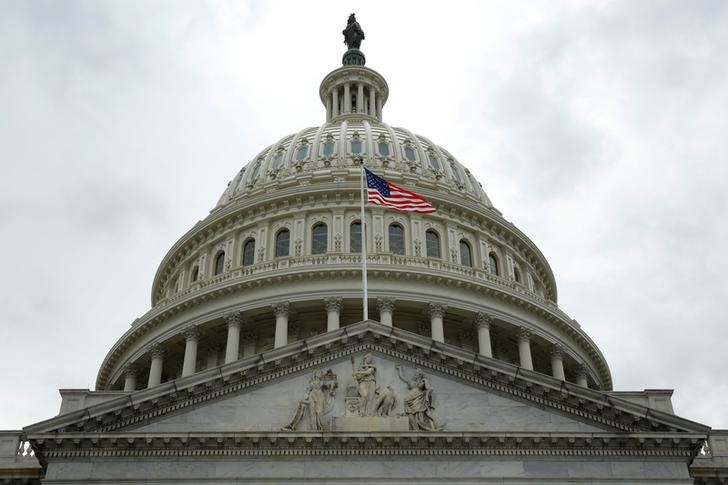(Bloomberg) -- The US federal budget deficit will shrink dramatically this year -- to an estimated $1 trillion -- due to a surge in tax revenue and the expiration of pandemic-related aid programs, the Congressional Budget Office said.
The shortfall is also seen narrowing to $984 billion in the 2023 fiscal year, which begins Oct. 1. The deficits this year and next are notably smaller than the $2.8 trillion in 2021, CBO projections released Wednesday showed.
“The deficit continues to decrease as a percentage of gross domestic product next year as spending related to the coronavirus pandemic wanes, but then deficits increase, reaching 6.1% of GDP in 2032,” the nonpartisan arm of the legislature said in a 10-year economic and budget projections report.
The shortfall narrows this year thanks in part to a surge in tax receipts that will propel federal revenues to the highest relative to GDP in two decades. But the long-term news is dark, with bigger deficits seen as a result of higher inflation -- which will drive up Social Security costs -- and interest rates on the federal debt.
Total federal debt is expected to increase by $1.9 trillion in fiscal 2022. With the economy growing at a faster pace, debt as a percentage of gross domestic product is expected to drop 97.9%, down from 99.6% in fiscal 2021, the CBO said. That’s seen falling again to 96% in 2023.
Looking further ahead, the CBO predicted the debt would rise to 109.6% of GDP in 2032. That compares with the previous long-term forecast, issued in July 2021, of 106.4% for 2031.
The expected rapid growth of nominal GDP and inflation, the CBO said, helps hold down the amount of debt relative to total output.
However, “after 2023, debt is projected to increase as a percentage of GDP, rising to 110% at the end of 2032. At that point, federal debt would be higher as a percentage of GDP than at any point in the nation’s history,” the report said.
The shifting fiscal picture comes against a cloudier economic backdrop across the globe as central banks move to tighten monetary policy in an effort to tame a sharp acceleration in inflation. The Federal Reserve is now expected to raise its benchmark interest rate by a full percentage point by July, and the European Central Bank to lift its deposit rate by at least a half point to zero by year’s end.
The CBO predicted the Fed would raise its benchmark rate only to 1.9% by the end of 2022 and to 2.6% by the end of 2023.
The tightening is aimed at relieving price pressures. The CBO sees the year-over-year inflation rate dropping to 4% by the fourth quarter of 2022, and to 2.3% a year later, as measured by the price index for personal consumption expenditures. That’s a somewhat more optimistic picture than at the Fed, where the median forecast from policy makers is for 4.3% inflation this year and 2.7% in 2023.
Higher interest rates will almost certainly lead to weaker growth. The report projects 3.8% GDP expansion in the US this year followed by a 2.8% increase in 2023. That compares to the median forecast of economists surveyed by Bloomberg that predicts 2.7% growth in 2022 and 2% next year.
Higher rates also mean net interest costs for the government are expected to double over the coming decade, as a percentage of GDP.
The CBO predicted unemployment, which ended April at 3.6%, would tick up to 3.7% in the fourth quarter of this year and average 3.5% in 2024.
The report is based on legislation passed prior to April 8 and on economic developments through March 2.
(Updates with period considered for economic developments in report in final paragraph.)
©2022 Bloomberg L.P.
